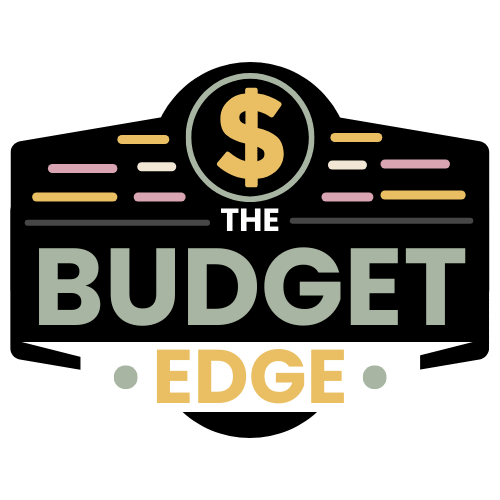
Budgeting on an Irregular Income

How We Budget on an Irregular Income
If your income changes on a weekly or monthly basis, you’re not alone – and yes you can still budget. Keep reading to see how we budget on irregular income.
There are months where the money seems to line up just right. But other months, we sit and cross our fingers and hope the timing works out.
That’s the rollercoaster of budgeting – and living – with irregular income. And if you’re living the same type of life, with unpredictable paychecks, you know just how challenging it can be to make a plan that actually works.
In our home, we juggle a mix of a full-time salary, a part-time hourly job, and income from self-employment. That means our income doesn’t just vary month to month – it also lands in our accounts on different days, different amounts and sometimes not exactly when it’s needed.
At first, we tried traditional budgeting techniques and advice, but it became clear very quickly that those tips and tricks didn’t fit our life. It felt too rigid, overwhelming and to be honest, a little defeating.
Over time, we focused on a flexible system that helped us organize our finances, gain some control and make a little bit of progress – even when income fluctuates. In today’s post, I’m going to walk you through the steps we take to budget – on a monthly basis – with irregular income, plus I’ll even add in some tips to help you feel more confident with your money, no matter the type of month you’re having.
Our Situation
Our journey to budgeting “bliss” truly started when we realized we just couldn’t count on consistent paychecks to guide us. Like many families, we don’t have a single income source. And our income sources don’t hit the accounts in the same amounts on the same days of the month.
Instead, this is what we work with:
- One salaried income that covers steady bills and expenses
- One part-time hourly job (with variable hours) that covers one or two monthly expenses
- And a self-employment income that is solely based on external factors
At first, we tried to predict our numbers with one number. We’d write out a monthly budget assuming we’d make it work no matter what. With three income sources, we thought budgeting would be so easy. Spoiler: it wasn’t. The reality was, this didn’t match the plan – when the orders didn’t come in for our self- employment income, the paycheck was short, when the part-time hours were cut, we scrambled.
It felt like we were always behind on something, regularly adjusting the budget within the month and always wondering if budgeting just didn’t work for us.
Eventually we gave up on the traditional monthly mold and built a new method that worked with our reality. It wasn’t perfect overnight, and if I’m being completely honest, it still isn’t perfect. But it gives us a structure we can stick to – one that makes space for flexibility and still helps us work toward our goals.

The Step-By-Step on Budgeting with Irregular Income
The trick here isn’t to give up on budgeting all together – it’s to change how you approach it! Here’s the system that we use to bring structure to our irregular income and help us stay on track:
1. Start with a Monthly Budget – But Base it on the Lowest Expected Income
We still sit down, review our bills and expenses for the upcoming month, and create a monthly budget for next month. But we don’t base this on the best-case scenario. Instead, we start with a lower average of what we typically bring in from self-employment. This gives a realistic foundation without overcommitting.
We also treat the part-time income as a dedicated stream: this income is dedicated to just two expenses – one car payment and tax payments. This way, we aren’t depending on it to fill in gaps or fund the whole month.
This setup gives us a solid base to work with, while leaving room to adjust if the income is higher than originally planned.
2. Know Your Monthly “Must-Cover” Expenses
Before we do anything else at all, we write down our non-negotiables. The bills and expenses that absolutely must be paid each month – housing, utilities, groceries, insurance, etc.
This is the bare-minimum number. The amount we need to survive, no matter what. Knowing this number gives us clarity and helps avoid panic when the income streams are lower for the month.
3. Build in a Buffer (Even if it’s a small one)
One of the first things we’ve started prioritizing was to create a buffer-fund – kind of like a mini savings that we can pull from when the income is delayed or lower than planned.
We started with just $20 twice a month. Over time, we plan to build this into a full month of must-pay expenses. This will give us even more freedom to budget with confidence, even when the numbers change.
The intention with creating the buffer fund is to pay next month’s bills with this month’s income. Our purpose for doing this is to negate the need for us to worry about how much we’re going to make this month to cover our non-negotiables. We will already know that we have this fund available to set everything to auto-pay.
4. Assign Roles to Every Dollar
Once we have the non-negotiables mapped out, we start working on what we’ll do with the rest of the income. Now, to be fair, we know going into each month that our income covers more than the minimum non-negotiables. But we still give every expected dollar a job.
The extra beyond the non-negotiables gets broken down into other priorities. Such as:
- Savings Goals
- Sinking Funds (we’ll go into these on another post soon)
- Fun and Personal Spending
- Extra Debt Payments
We never assume extra money is coming, but if it does – great! We then give that money a purpose when it arrives.
5. Check in Weekly & Adjust When Needed
Because the income comes from different sources and at different times, we’ve found it helpful to sit down weekly and review and adjust our original budget for the month. If a new payment comes in, we update our numbers and decide where it is going. If the income stream was higher than planned, we add in an extra buffer fund payment, debt payment, and yes, sometimes extra “fun” money spending.
This check-in helps us stay in control and avoid the feeling of constantly being thrown back and forth.
What This Looks Like in Real Life
To give you an idea of how the system works, here’s an example of how we adjust our budget depending on whether we have a high- or low-income month.
These aren’t our exact numbers but reflect the patterns we see with irregular income shifts.
🔻 Low-Income Month Example (Lower Self-Employment/Part-Time Income)
Total Income This Month: $5200
- $3090 Salary Income (two bi-weekly paychecks)
- $900 Part-Time Hourly (used for car + tax payments)
- $1,210 Self-Employment Income
What gets covered:
- ✅ Housing Payment
- ✅ Utilities
- ✅ Groceries
- ✅ Car Payment(s) (covered by part-time income)
- ✅ Tax Payments
- ✅ Cell Phone Bill
- ✅ Cable/Internet
- ✅ Health Insurance Premiums
- ✅ Car Insurance
- ✅ Housing Insurance
- ✅ Kids’ Allowances
- ✅ Minimum Debt Payments
- ✅ Fuel for Transportation
- ✅ Limited funds for monthly subscription services (streaming, etc.)
- ❌ No sinking funds
- ❌ No extra debt payments
- ❌ No fun money
- ❌ Limited or no savings
In a month like this, we only cover essentials. No fluff and if needed, we dip into our buffer fund for anything unexpected.
🔺High-Income Month Example (Full Order Load, Extra Hours)
Total Income This month: $7,890
- $3,090 Salary Income (three bi-weekly paychecks)
- $1,200 Part-Time Hourly
- $3,600 Self-Employment Income
What gets covered:
- ✅All essentials listed in the low-income example
- ✅ Extra debt payments
- ✅ Sinking funds (clothes, gifts/holidays, vacations)
- ✅ Fun money or family extras
- ✅ Refill buffer fund (or add to it)
*These amounts are examples to show the process – not our actual income.*
This is where the flexibility in this system really pays off. We don’t have to go back and redo our budget from zero. We just fill in more categories as money becomes available, based on the priorities we already had set.
These examples help to keep us grounded and the system truly does reduce stress. We don’t guess or hope – we’ve planned based on what we actually have.
You Can Make This Work – Even If the Income Is Irregular
Budgeting with irregular income(s) takes a bit of trial and error but is absolutely possible. The key is building a system that works for your reality – not trying to squeeze your life into a one-size fits all budget.
Start somewhere, even if it’s small. The key is to identify your must-cover expenses first, build a buffer when and where you can, and give every dollar a purpose. Over time, you’ll feel less stressed and more in control – even when your income fluctuates.
To help you get started, I’ve created a free Irregular Income Budget Template – you can download it here. It’ll help you map out your priorities for both low- and high-income months. This way, you always know where the money should be going.
This system isn’t perfect, but it’s taken a lot of the stress off our shoulders – and that’s worth everything to us. Remember: the goal isn’t perfection – it’s progress. Your system can evolve as your income changes.
And if you’ve got your own tips for budgeting with unpredictable income, I’d love to hear them – drop them in the comments or share them with me on Instagram!




